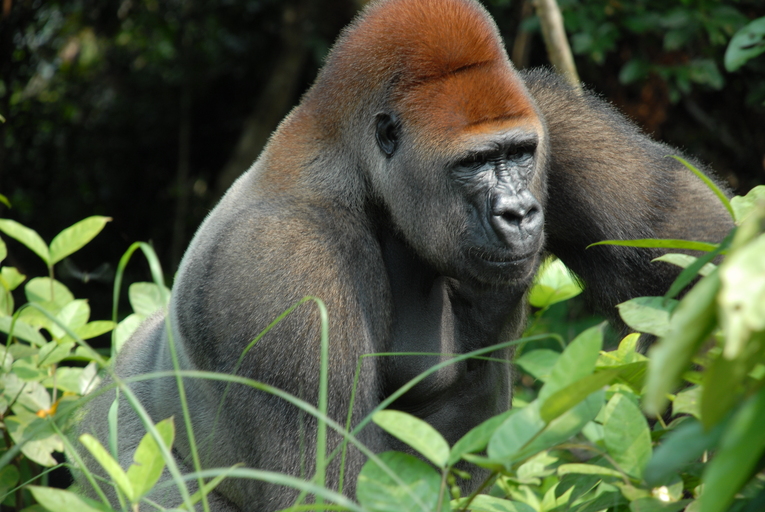Please note: Osher Rainforest will be closed for maintenance Jan. 14–16.
Science News
The Gorilla Genome
March 8, 2012

Over the past several years, researchers have come closer and closer to understanding our origins by sequencing the genomes of our closest relatives—the great apes. Chimpanzees and orangutans have offered perspective with their genomes, and now gorillas can be added to that list. As the last genus of the living great apes to have its genome decoded, the results are starting to confirm some theories and destroy others.
The study, published in the journal Nature yesterday, not only provides a resource for research into human evolution and biology but a resource for gorilla biology and conservation as well.
New Scientist reports that
The [gorilla] genome contains more than 3 billion pairs of DNA letters—roughly the same as humans—and includes about 21,000 genes.
And we’re not too different, explains ScienceNOW:
Humans and apes are nearly identical in the vast majority of base pairs, or letters of the genetic code: The human genome is 1.37% different from the chimp's; 1.75% different from the gorilla's; and 3.4% different from the orangutan's.
The team found that divergence of gorillas from humans and chimpanzees occurred around ten million years ago, confirming previous theories. The split between eastern and western gorillas occurred much more recently, in the last million years or so, and took place gradually, although they are now genetically distinct. This split is comparable in some ways to the split between chimpanzees and bonobos, or modern humans and Neanderthals.
The team searched more than 11,000 genes in human, chimpanzee, and gorilla for genetic changes important in evolution. Humans and chimpanzees are genetically closest to each other over most of the genome, but the team found many places where this is not the case. 15% of the human genome is closer to the gorilla genome than it is to chimpanzee, and 15% of the chimpanzee genome is closer to the gorilla than human.
“Our most significant findings reveal not only differences between the species reflecting millions of years of evolutionary divergence, but also similarities in parallel changes over time since their common ancestor,” says co-author Chris Tyler-Smith of the Wellcome Trust Sanger Institute.
In the similarities, the researchers discovered some surprises, says Tyler-Smith. “We found that gorillas share many parallel genetic changes with humans including the evolution of our hearing. Scientists had suggested that the rapid evolution of human hearing genes was linked to the evolution of language. Our results cast doubt on this, as hearing genes have evolved in gorillas at a similar rate to those in humans.”
Gorillas survive today in just a few isolated and endangered populations in the equatorial forests of central Africa. They are severely threatened and their numbers are diminishing. This research not only informs us about human evolution but highlights the importance of protecting and conserving the full diversity of these remarkable species.
Image: Pierre Fidenci/Wikipedia